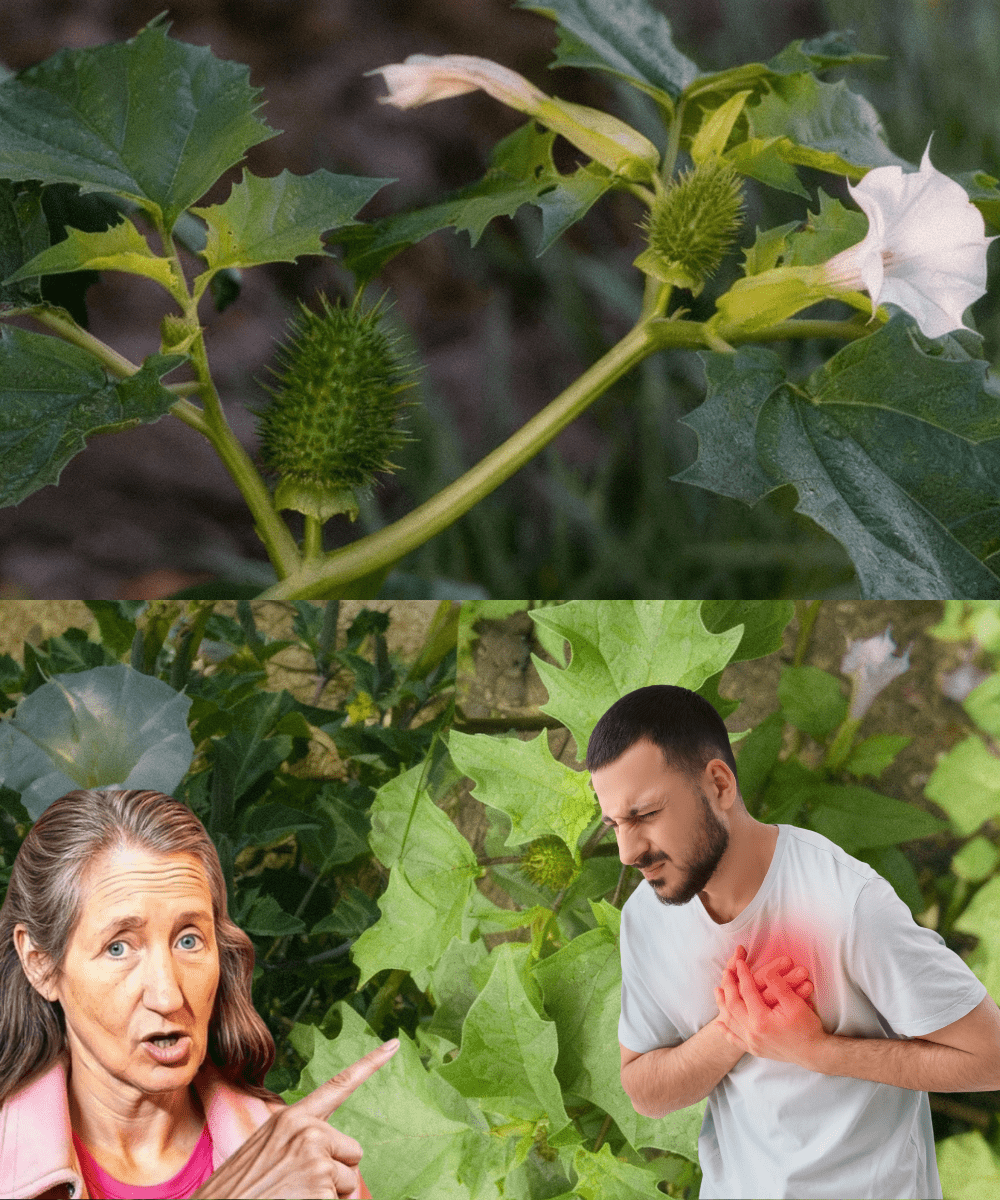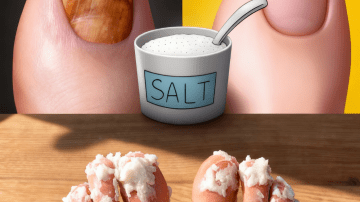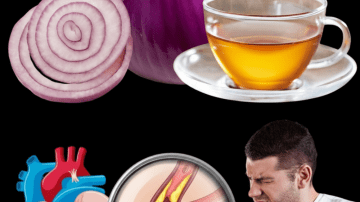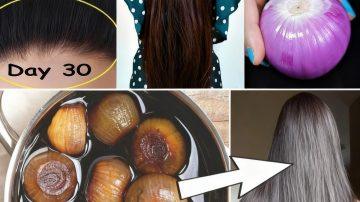Imagine a plant so beautiful, so fragrant, and so deceptively innocent that gardeners worldwide covet it—yet, every part of it harbors a terrifying cocktail of toxins capable of inducing hallucinations, coma, and even death within hours.
This is the chilling reality of Datura (often confused with its close relative, Brugmansia, commonly known as the Angel’s Trumpet). This stunning, easily cultivated botanical is not just toxic; it is one of the most dangerously potent natural hallucinogens and poisons found in residential gardens. Its danger is exponentially increased by its accessibility and the mistaken belief that its historical medicinal uses render it safe.
➡️ If you value the safety of your children, your pets, or yourself, you need to dedicate the next few minutes to this essential, life-saving guide.
We are not talking about a mild irritant. We are discussing a plant that contains deadly concentrations of tropane alkaloids—powerful anticholinergic compounds that systematically shut down the body’s central nervous system. Despite constant warnings from experts, Datura continues to be a favorite in decorative landscaping, often growing within easy reach of curious toddlers and foraging pets.
In this crucial, in-depth exploration, we will expose the hidden dangers of the Datura plant, detail the terrifying symptoms of poisoning, and provide the definitive steps you must take to ensure this beautiful, yet lethal, siren of the garden is safely and permanently removed from your property. This is a call to awareness—a vital step in making your outdoor space a truly safe haven.

The Chemistry of Terror: Understanding Datura’s Lethality
The plant’s danger stems from its unique biochemical composition. Datura and Brugmansia varieties contain high concentrations of three specific tropane alkaloids: atropine, scopolamine, and hyoscyamine. These compounds are powerful anticholinergics that disrupt the parasympathetic nervous system—the system responsible for involuntary functions like heart rate, breathing, salivation, and temperature regulation.
I. 🧪 The Mechanism of Poisoning: A System Shutdown
- Anticholinergic Overload: When ingested, these alkaloids flood the body, blocking the action of the neurotransmitter acetylcholine. This results in a systemic shutdown of basic bodily functions.
- Brain and Mind Warfare: Scopolamine, in particular, is a powerful central nervous system depressant and hallucinogen. In medicinal doses, it is used as an anti-nausea drug; in the wild doses of the plant, it induces terrifying, often prolonged states of delirium, psychosis, and disorientation.
- The Fatal Tipping Point: The dose that causes hallucinations is dangerously close to the dose that causes lethal respiratory failure or cardiac arrest. This tiny therapeutic window makes any ingestion of the raw plant tissue an extremely high-risk gamble.
II. ☠️ The Danger of Inconsistency
The lethality of Datura is compounded by the fact that the concentration of these toxic alkaloids varies wildly not only between individual plants but also between different parts of the same plant (leaves, seeds, roots, flowers) and even at different times of the year.
- No Safe Dose: There is absolutely no way to determine a “safe” amount. A small portion of a leaf could contain a therapeutic dose, while a similarly sized piece from a seed pod could be lethal. This inherent unpredictability makes the plant an acute, unpredictable threat.
- The Seed Pod Trap: The seed pods are particularly dangerous. They can appear tempting to young children and contain the highest concentration of alkaloids, leading to the most severe and rapid poisonings.
The Terrifying Symptoms: Recognizing the Emergency
If a child, pet, or even an adult accidentally ingests any part of a Datura or Angel’s Trumpet plant, immediate medical attention is non-negotiable. The symptoms are distinctive, severe, and progress rapidly.
Look for the Classic Signs of Tropane Alkaloid Poisoning (The “Mad as a Hatter” Rhyme):
- Hot as a Hare: Fever due to the inability to sweat or regulate body temperature (major sign).
- Blind as a Bat: Severely dilated pupils (mydriasis) leading to blurred vision or temporary blindness, often lasting for days.
- Dry as a Bone: Extreme dry mouth, dry skin, and no sweating (due to blocked parasympathetic function).
- Red as a Beet: Flushed, red face and body due to increased body temperature and poor circulation.
- Mad as a Hatter: Severe confusion, agitation, hallucinations (often terrifying), memory loss, and psychosis.
Progression to Medical Emergency:
As the poisoning worsens, the symptoms escalate to life-threatening emergencies: rapid heartbeat (tachycardia), difficulty breathing, seizures, rhabdomyolysis (muscle breakdown), and eventually, coma and respiratory failure. Survival often depends on rapid gastric lavage and supportive care in a hospital setting.
The Misunderstanding: Why We Grow Death
The widespread cultivation of Datura and Brugmansia often stems from three critical misunderstandings:
- Aesthetic Appeal: The beautiful, large, trumpet-shaped flowers and their intense evening fragrance make them highly desirable ornamental plants, masking their true danger.
- Historical Use: Ancient civilizations and traditional healers used Datura components for legitimate, powerful medicinal purposes (e.g., as an anesthetic, asthma treatment, or pain reliever). However, these uses involved micro-dosing under strict, expert control. This history wrongly leads some modern enthusiasts to believe the plant is safe for DIY herbalism, a catastrophic misjudgment.
- Misidentification: The terms Datura (a smaller, upright plant) and Brugmansia (a larger, hanging flower) are often confused, but both share the same deadly alkaloid profile, perpetuating the belief that one is safer than the other.

🚨 The Definitive Action Plan: Immediate Removal
For anyone with children, pets, or an interest in edible gardening, Datura/Angel’s Trumpet represents an unacceptable risk. It must be permanently removed.
Step 1: Preparation and Protection
- 🧤 Gear Up: Wear heavy-duty gloves, long sleeves, and safety glasses. Even handling the plant can cause skin irritation, and accidentally rubbing your eye after touching the sap can cause severe pupil dilation and temporary blindness.
- 🗑️ Isolation: Have large, puncture-proof plastic bags ready for immediate disposal.
Step 2: Complete and Careful Removal
- 🪓 Cut and Bag: Cut the plant at the base. Immediately bag all foliage, stems, and flowers. Do not put any part of the plant in compost or regular garden waste—it must be disposed of as potentially toxic waste, often requiring specific disposal methods mandated by local authorities.
- ⛏️ Root Extraction: The roots are also highly poisonous. Use a shovel to dig out the entire root system. Any leftover root material may allow the plant to resprout.
- Soil Cleanup: Check the area thoroughly for any dropped seeds or seed pods. The seeds can remain viable in the soil for years.
Step 3: Post-Removal Safety
- 🧼 Decontamination: Wash all tools and gloves thoroughly with soap and water.
- Observation: Monitor the area for the next few weeks for any new shoots sprouting from residual roots or missed seeds.
The Final Warning: Beauty Should Not Kill
Datura and the Angel’s Trumpet are stark reminders that in the natural world, beauty often conceals profound danger. The risk posed by these plants—particularly to vulnerable populations like children and pets—far outweighs their aesthetic value.
Your garden should be a place of peace, not a source of deadly risk. By making the informed, courageous decision to remove this hidden hazard, you are actively safeguarding the health and well-being of everyone who shares your space.
Don’t admire the beauty; respect the poison. Take action today and ensure this silent killer is permanently exiled from your home environment.
Would you like information on how to identify the subtle differences between the Datura and Brugmansia varieties?






